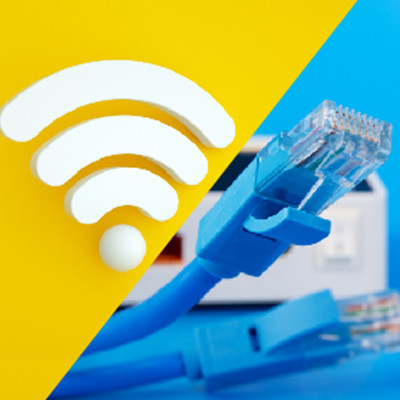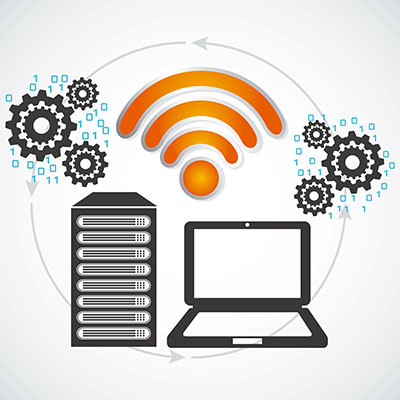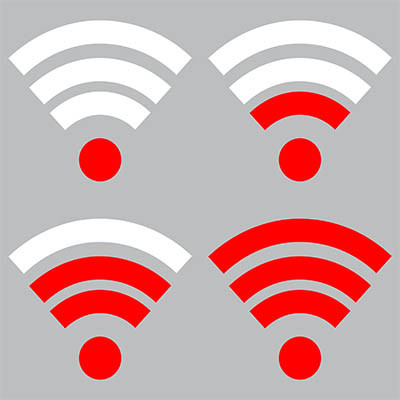Everyone associated with your business is constantly connected to the Internet. You know how you can tell? Tell them the Wi-Fi is down for a couple of hours and see what their reaction is. With so much weighing on your ability to connect to the Internet you have to make a decision: Do you wire your connections to the web or do you deploy strong Wi-Fi and try to do it that way?
Argentum IT LLC Blog
Your business depends on its bandwidth and its Internet connection to remain productive, part of which means ensuring that you have a reliable and stable wireless connection. How can you set up your network so that it is optimal and efficient? We have some thoughts on the matter and want to share them with you.
With so many wireless networks available to connect to, it’s no surprise that wireless security is a cornerstone of working while on the go. We thought it would be helpful to have a list of best practices to help ensure your wireless networks, and the devices connecting to them, are as secure as possible.
With more businesses moving in the direction of remote connections and mobile devices, it’s no surprise that wireless Internet is such a pain point for organizations. Sometimes it can be an exercise in frustration to connect to your office’s wireless network, and you might not really know what to do about it. Here are some ideas to try and increase your wireless network’s strength or signal.
The way your business uses and accesses data is changing. A short time ago, you couldn’t imagine that you would have a comprehensive strategy to keep data secure when sending and receiving it wirelessly, but today wireless transmission methods have become more secure, reliable, and fast. This month, we’ll take a look at the difference between wired and wireless connections in the modern business.
Chances are you’re still spending a lot of time at home, and a lot of that time is being spent on the Internet. With so many still working remotely, and many educational institutions continuing remote learning, the strength of a household’s Wi-Fi signal is going to be crucial. We wanted to offer you some tips to help you maximize the signal strength of your router.
Of all the technology that you have in the office, your printers may not be at the top of your list of security concerns. This is a mistake, as an unprotected printer could easily serve as an access point to someone with less-than-righteous motives. To help correct this, we’re dedicating this week’s tip to improving the security of your printing solutions.
The establishment of Wi-Fi as a tool has been revolutionary for society. With mobile carriers instituting data caps, and more people using mobile devices to access the ever-increasing ecosystem of content, Wi-Fi hotspots have become more than just useful tools, they have become a staple for businesses and individuals from all over the world.
Going paperless these days is all the rage, even though we understand why some organizations like to keep their hardcopy documentation printed out and available. If you’re careful, you can minimize printing to reduce the costs associated with printing, while still keeping your critical files organized and at the ready.
How many times have you sighed about plugging your phone in, reaching behind your desk to get to the outlet? All of this could change with the addition of near-field induction charging, more commonly known as wireless charging. We’ll review what modern wireless charging is capable of, as well as what kind of obstacles could be avoided through its use.
5G will be here eventually, but it’s just a matter of “when” it will arrive. It feels like we’ve been saying that 5G will arrive soon, but the fact remains that it’s not here… at this moment, anyway. Still, the ambiguity surrounding 5G, or the “Fifth Generation” of wireless networking, can get a bit confusing. We’ll help you clear up any confusion you might have about 5G so you can step into the future knowing what this technology might hold.
When you turn on your device’s Wi-Fi capabilities, do you ever take the time to look at some of the names of your neighbors’ connections? You’ll see some rather boring names as well; some might just use the name of their organization or the family’s name, or even just the default SSID used by the router. The fact of the matter is that a wireless network name that’s easy to gloss over is a best practice for network security.
If we asked you to count the number of mobile devices in your workplace, would you be able to do so? This includes smartphones, laptops, tablets, and others--anything that’s not a workstation or hardware tied down to your location. While mobile devices can be beneficial for any business, it’s still important to keep security at the top of your mind. Here are three topics that you need to be sure you’ve considered before allowing mobile devices in the workplace.
The dreaded Wi-Fi dead zone: it’s a place where all wireless signal drops or becomes unstable, even though you could move three inches in either direction and you’ll have no problem. In this case, there’s usually something interfering with the signal, be it a wall or another device. We’ll walk you through some of the basic troubleshooting tips that you can use to resolve your connection troubles.














